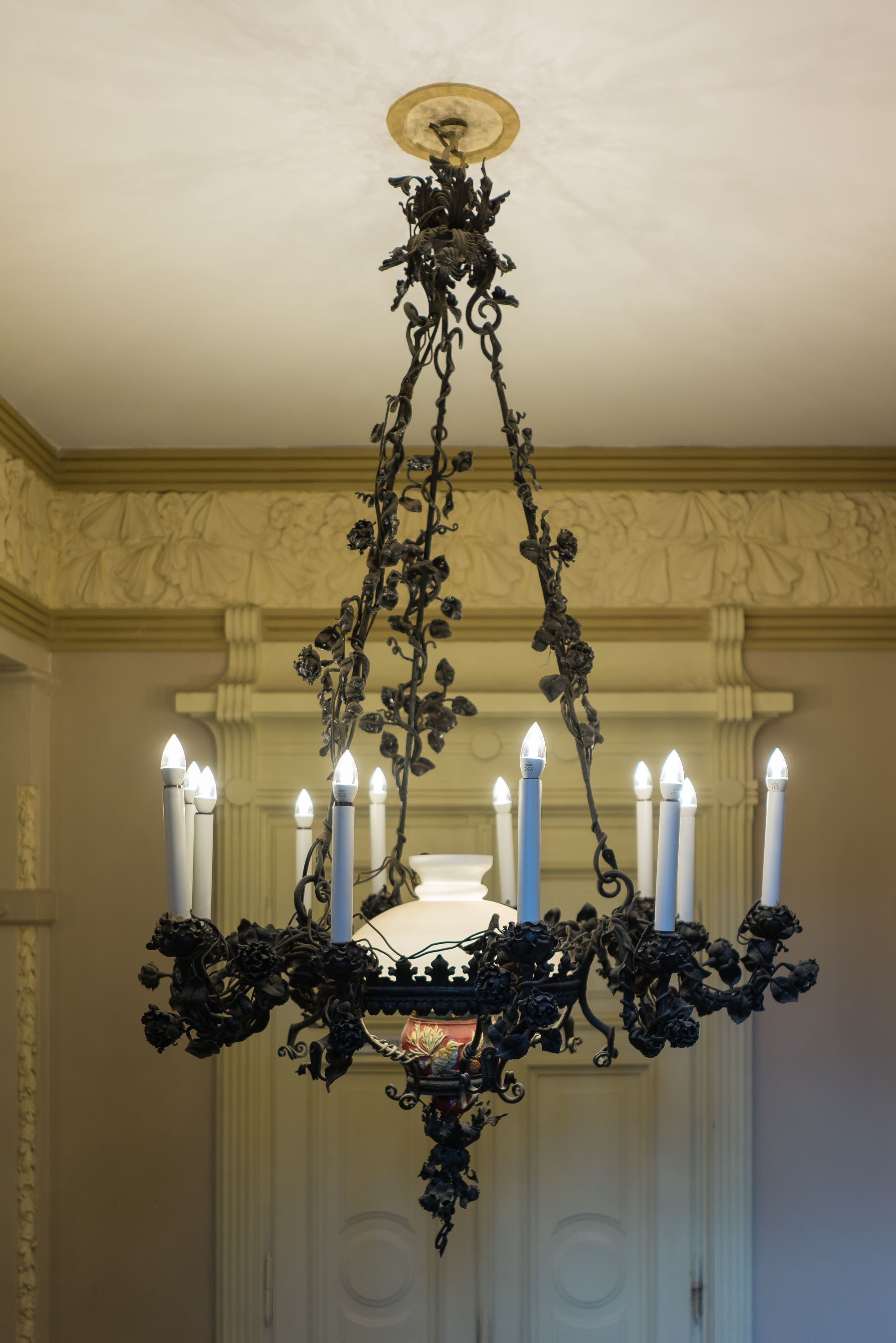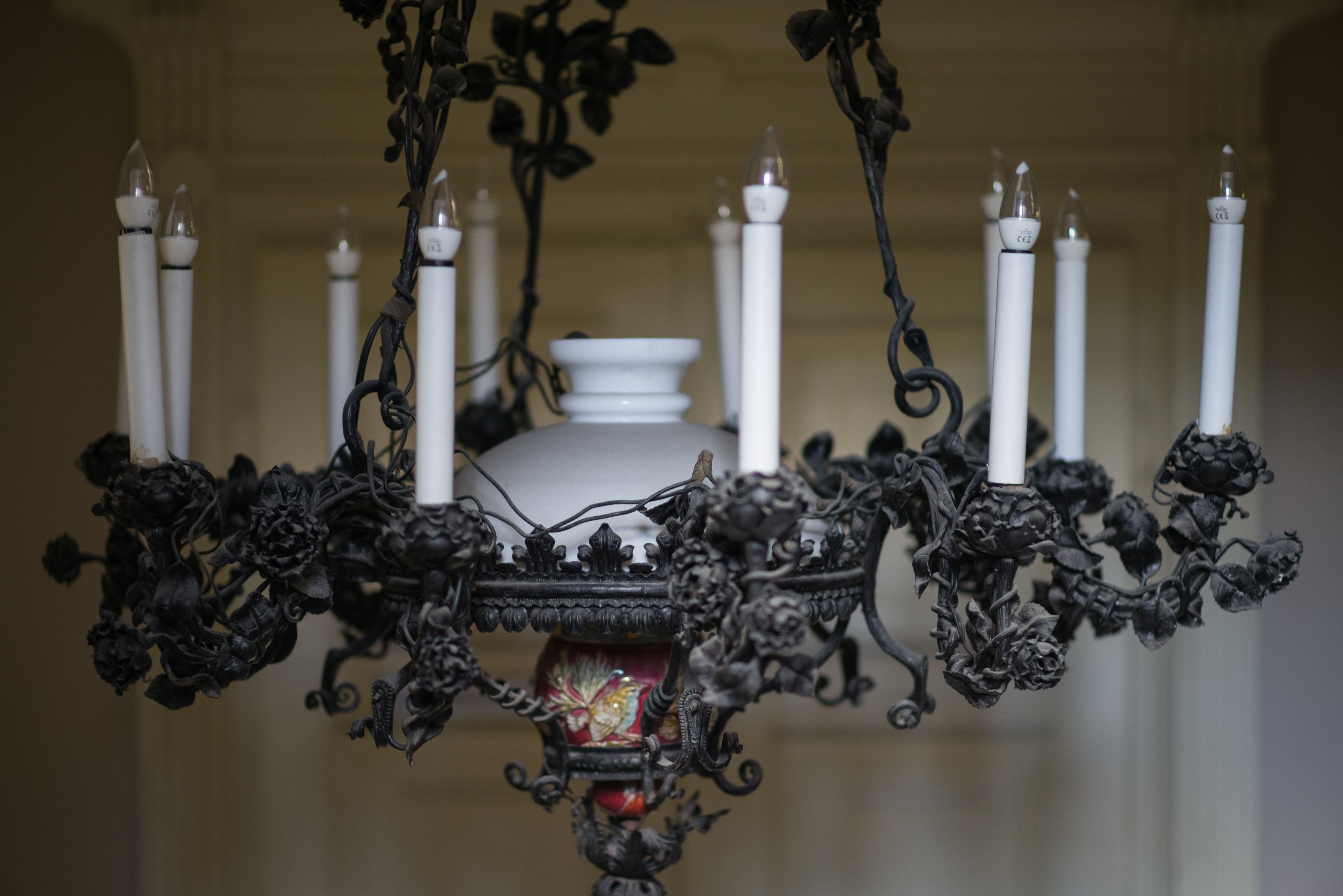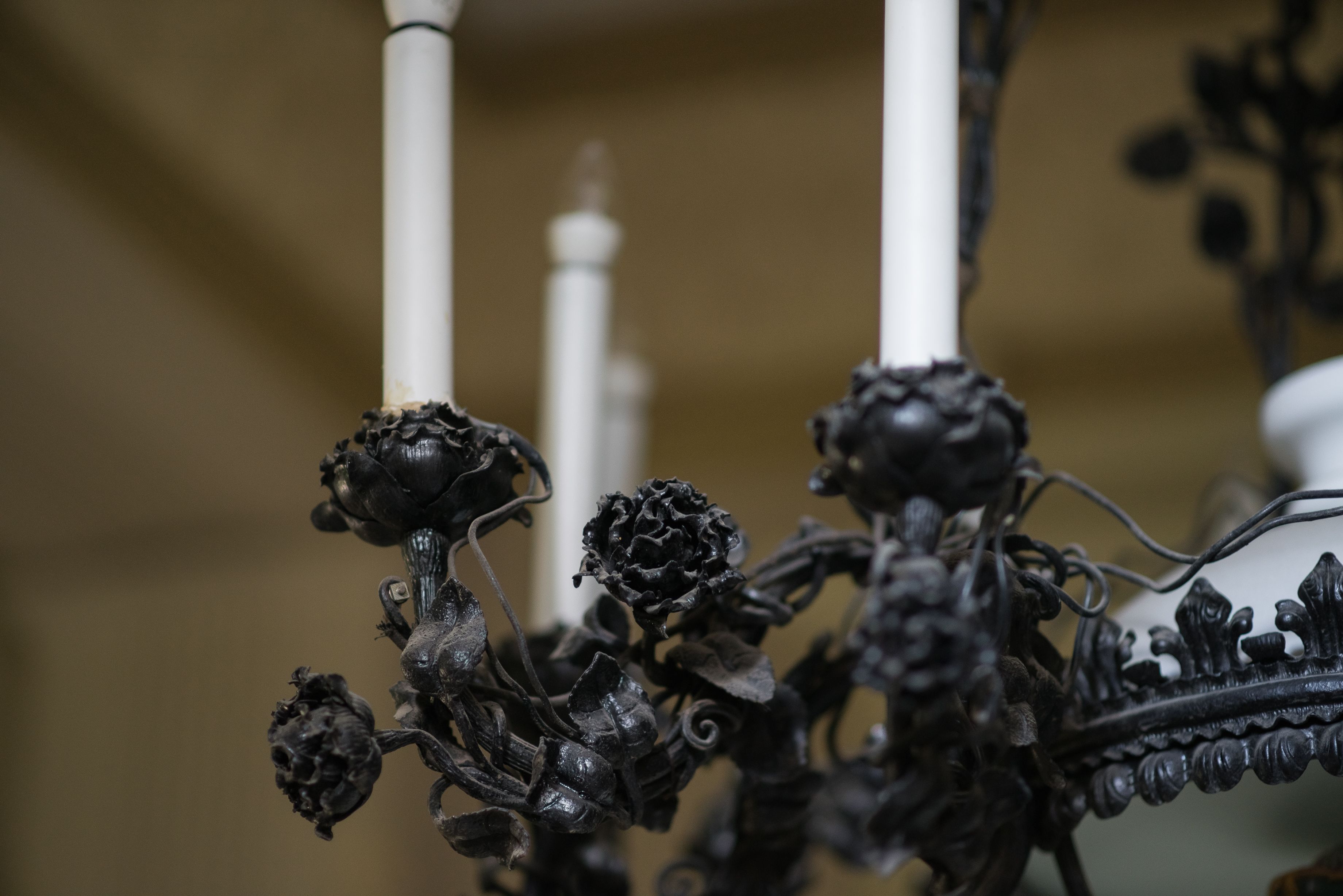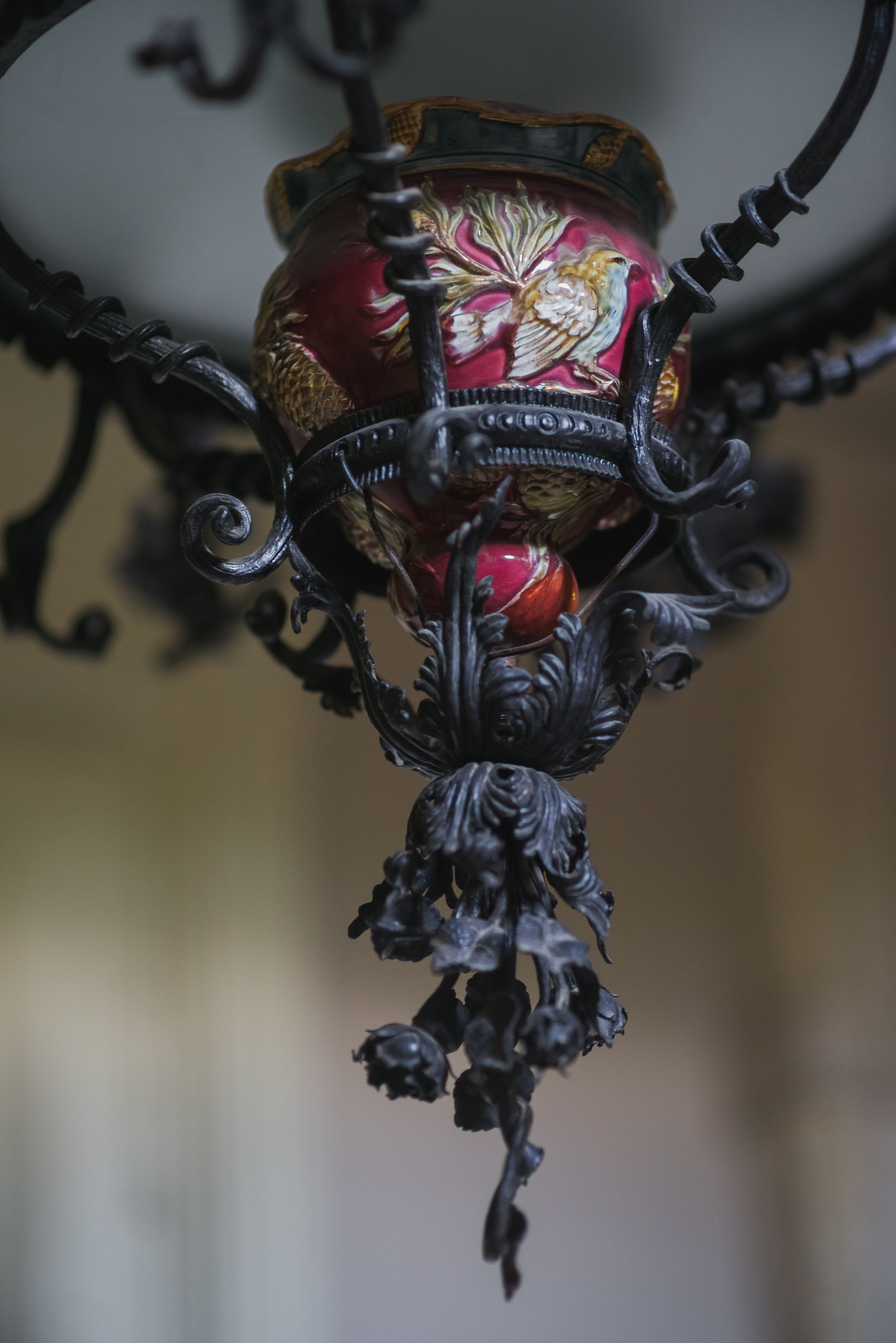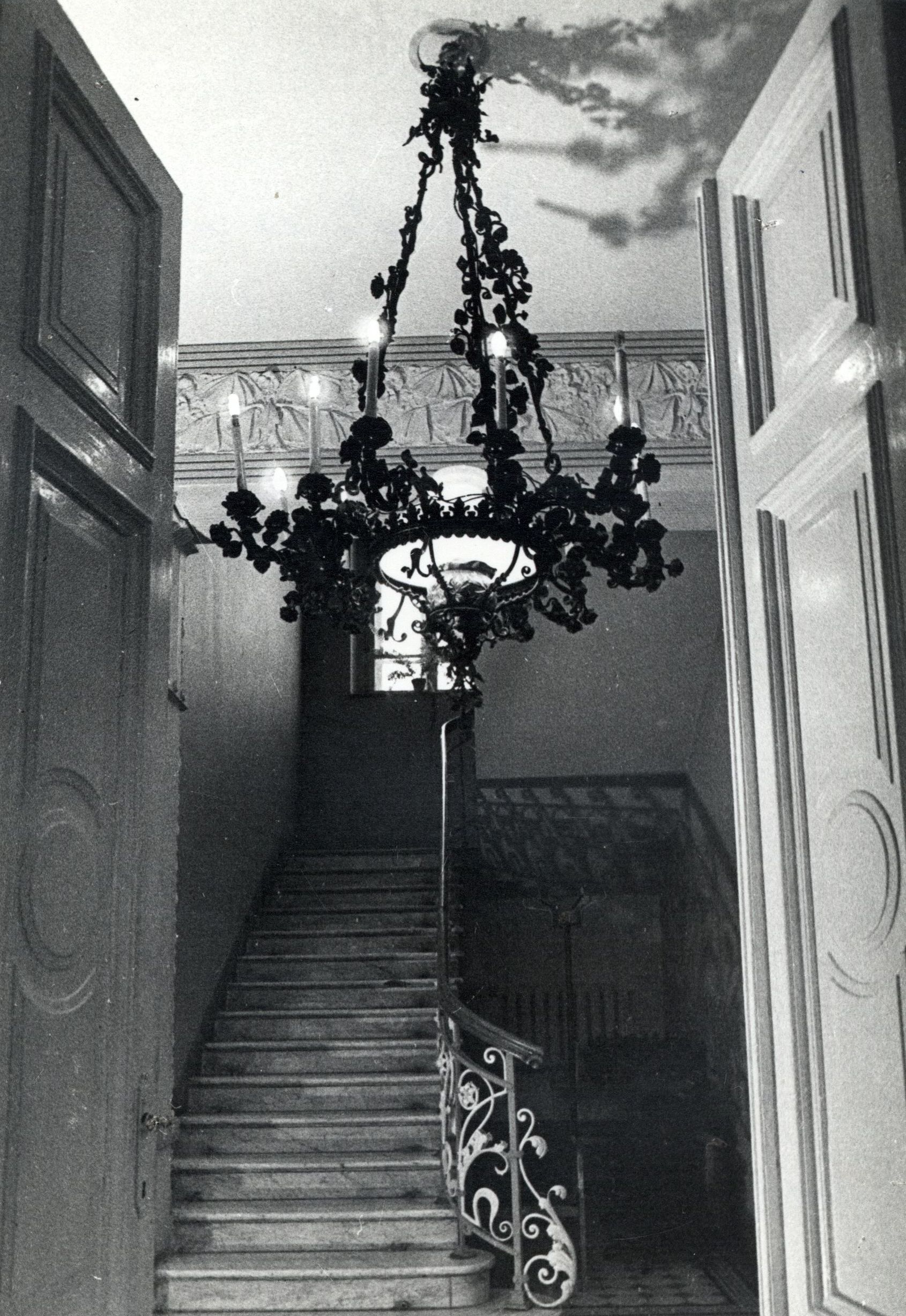P. Vileišis Palace (the Institute of Lithuanian Literature and Folklore)
The unique code in the Cultural heritage register – 8039
Address: Antakalnio str. 6, Vilnius
Time of origin: 1904–1905
Place of origin: Lithuania, Vilnius / Petras Vileišis ironwork workshop (operated in 1900–1908)
Material, Technique: iron, steel sheet: forging, repoussé, cutting, folding, riveting; faïence: glazing; glass
Dimensions: height – 205 cm, diameter – 130 cm
An impressive forged 12-arms chandelier- kerosene lamp decorates the vestibule of Petras Vileišis Palace built at the early 20th century. The history of the chandelier is related to the personality of an engineer and prominent Lithuanian public and cultural figure. After leading the construction of railways and bridges in the Russian Empire for almost two decades, Petras Vileišis returned to Vilnius and upheld the Lithuanian identity in many ways. In 1897–1900, he founded an ironwork workshop in Poltava street No. 55–57 (at present, Paneriai street), where he mainly recruited workers of Lithuanian nationality.
It is said that the workshop workers themselves made a chandelier and two flower stands of the same style on the occasion of the 20th anniversary of Vileišiai marriage and thanking for their care.
The chandelier consists of a rosette with cut leaves at the top, three rods, big and small ring for kerosene lamp and 12 arms. The upper ring holds a white glass hood, the lower one a faïence bird-painted and glazed kerosene lamp vessel. All the forged parts are decorated with climbing rose leaves, tendrils and blossoms carefully cut of thin tin, which can count up to 40 on the chandelier.
There are few forged chandeliers in Lithuania; therefore, the chandelier has typological as well as artistic, historical and memorial value. It is a single product of the workshop, which has been operating in Vilnius for a short time. The original history of the workshop reminds us of the famous Lithuanian personalities of the early 20th century and their work.
Literature and sources:- Ramonienė Dalia, „Sietynas“, in: Lietuvos TSR istorijos ir kultūros paminklų sąvadas, t. 1, Vilnius: 1988, p. 89.
- Valtaitė-Gagač Alantė, XVII a.–XX a. 4 dešimtmečio sietynų paveldas Lietuvoje: Daktaro disertacija, Vilnius: Vilniaus dailės akademija, 2015, p. 101, 268.
- Vanaginienė Žibutė, Dailės kūrinio aprašas Uk 8039, 2002, in: Kultūros paveldo centro Kilnojamųjų objektų poskyrio archyvas.
- Vileišių rūmų ansamblis Vilniuje, sudarė Gytis Vaškelis, Vilnius: Lietuvių literatūros ir tautosakos institutas, 2014, p. 92.
